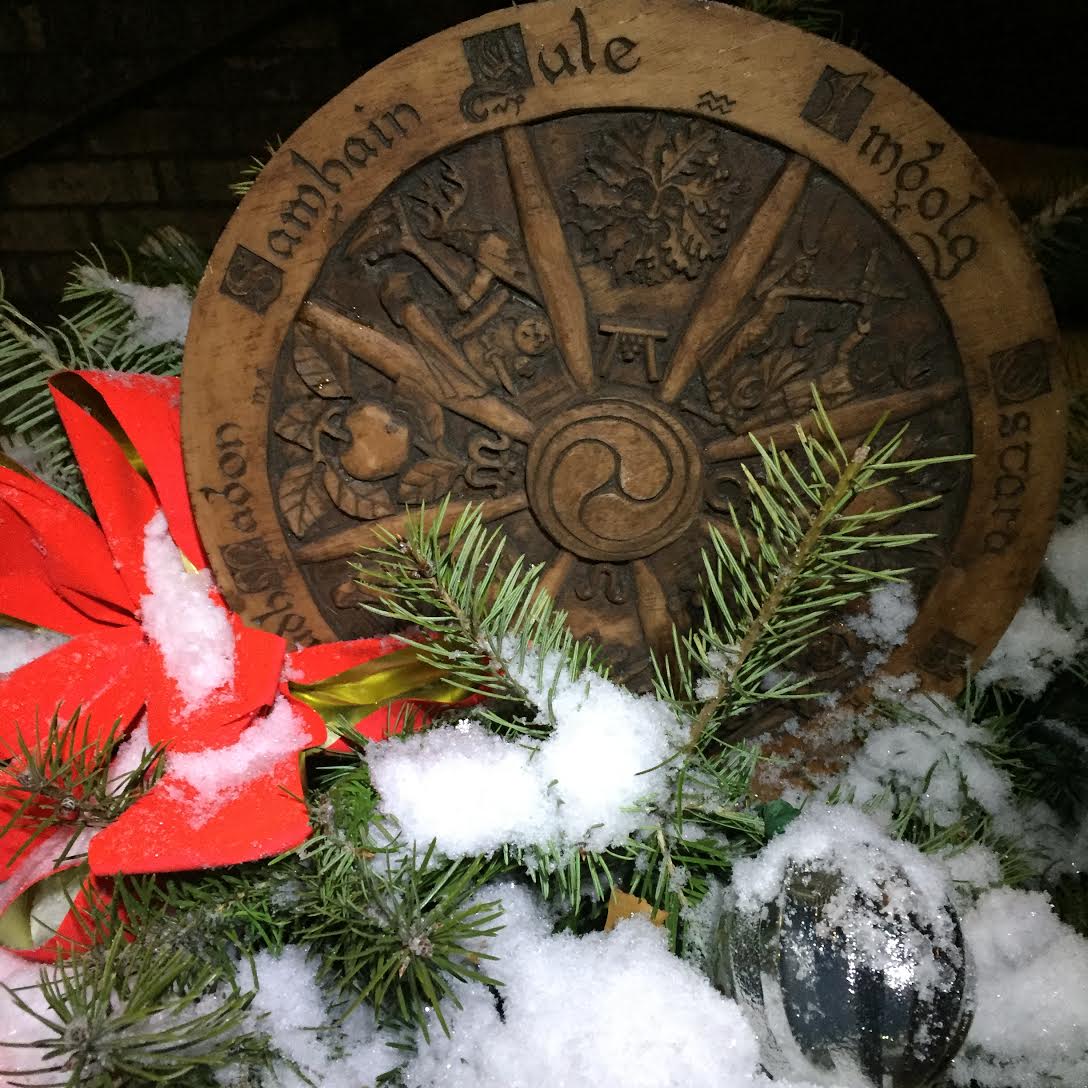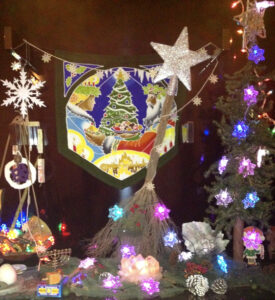The Seasonal Psychologist is a year-long series by Pagan Psychologist Betz King. Each piece corresponds to one of the 8 Pagan Sabbats, or holidays, while exploring ways to use the symbolism of the season for personal growth and in clinical practice.
I conceptualize both my personal development, and that of my clients, within the framework of our local 4-season landscape. Mostly this means a framework of trees, crops native to Michigan, and lots of plants and flowers. The Pagan path is a seasonal one, hosting 8 holidays called Sabbats. They parallel the movement of the sun across a year. Each holiday expresses a facet of the relationship between Light, Dark and life. I use them as lenses of reflection, opportunities to contemplate the cycle of birth, growth, harvest and death that impacts all living beings.
As a Pagan psychologist, many of my clients have some form of an earth based belief system. This allows us to revisit treatment goals seasonally. The view from my office window is lush with trees. A simply glance outside provides the framework for our review; whatever the trees are doing becomes an invitation to consider the same within ourselves. The Oak trees that were at the height of their strength in midsummer have been usurped by the Holly, whose strength peaks at Midwinter, and we are reminded that one season’s strength is another’s weakness.

Holidays at the end of our calendar year and the beginning of the next often thematically involve light, both real and metaphoric. Legends and lore share thematic expressions of miracles, hope, luminosity and triumph. Whether the birth of Jesus on Christmas, the enlightment of Buddha on Bodhi’s day, the festival of lights during Hanukah or the lighting of Kinara candles at Kwanza, these holidays and many more invite people to gather during the darkest time of the year, to celebrate and give thanks for having conquered both internal and external darkness.
Winter Solstice, also known as Yule, celebrates the return of the Sun. It occurs on the shortest day and longest night of the year, when the sun’s daily maximum elevation in the sky is the lowest. Lasting only a moment in time, it marks the reversal of the gradual lengthening of nights and shortening of days. Of all the year, it is the day with the greatest number of hours of darkness, often called “the longest night of the year”.
Imagine that your entire existence depended on the favor of the Sun. With it, your crops would grow strong, and after the harvest, you could store food for the winter. With it, the days would be warm enough for your livestock to naturally mate and reproduce, thus providing you with meat, milk and skins. With it, there would be enough warmth and daylight to travel safely to distant lands for supplies and celebrations. Prior to our “civilized ways” we depended on the Sun, its light and warmth, for all aspects of our survival. Hence, the day that brought us the return of the sunshine was truly a day of celebration, as it brought hope to a time of darkness, and assured continued life
Psychologically, this is a time to celebrate that we have lived through the darkness, and are guaranteed an emergence into light. It is the dawn that comes after the dark night of the soul. Consequently, we give thanks for all that has sustained us. In Michigan, even though the days grow longer, we have at least two more months of cold snowy weather, and it’s easy to forget that each day brings another minute of light.

As both a professor and a clinical psychologist, December finds me surrounded by anxious students who fret over final papers and exams, with grades needing to be entered, and a new semester to prepare for. Clients, cast back into family roles they’ve worked hard to transcend, often regress and need help re-stabilizing. The peaceful vacation I imagine rarely comes to fruition, while the ‘reason for the season’ is buried under social obligations and caloric intake.
This month, my clients and I will plot our way through these paradoxically stressful celebrations, while honoring the triumph of personal light over personal darkness. Like George Harrison, we acknowledge that “it’s been a long cold lonely winter”. We trust that the lengthening days will show us how “that ice is slowly melting”, as we joyfully declare “here comes the sun”! Another cycle of growth and harvest lays before us and the goals for spiritual growth and actualization that we named at Samhain are now articulated in greater detail. Therapy becomes a time for thumbing through the seed-catalogs and plotting out the actual garden of our next growth cycle.
As your travels carry you past the seasonal displays of lights, I invite you to name the darkness you have traversed through and triumphed over. Name also the strengths that have served you, for they are tools that you can use again and again. As you negotiate parties, trips, family and gift giving, can you focus on the real reason for the season? Can you feel, in your bones, heart, spirit or soul, the celebration that comes from overcoming adversity?
By reminding ourselves of what our ancestors knew – that it is always darkest before the dawn – we are able to wait with faith for the returning Light, and to give gratitude for what is illuminated. Bright Solstice blessings to all!
 Betz King, PsyD, LP is an associated faculty member in MSP’s master’s program. About her new blog series, she writes, “The Seasonal Psychologist explores my intersectionality as a Solitary Pagan and psychologist, through an integration of teachings and tools from both psychological and spiritual traditions.” Read more about Dr. King, including her American Priestess / Priest Training Program, here.
Betz King, PsyD, LP is an associated faculty member in MSP’s master’s program. About her new blog series, she writes, “The Seasonal Psychologist explores my intersectionality as a Solitary Pagan and psychologist, through an integration of teachings and tools from both psychological and spiritual traditions.” Read more about Dr. King, including her American Priestess / Priest Training Program, here.